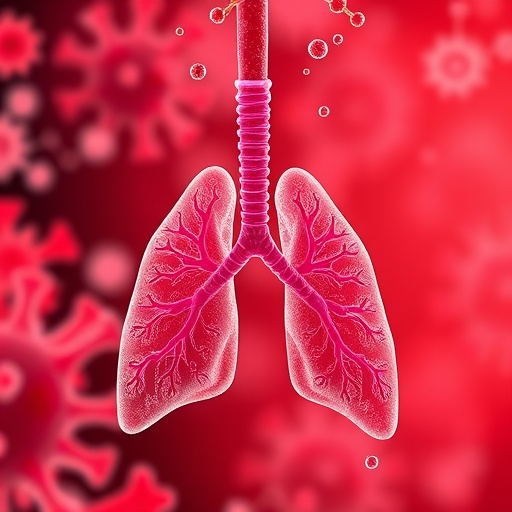Visugromab Plus Nivolumab Shows Durable Response in Refractory Tumors – Targeted Oncology

Clinical Trial Report: Advancing SDG 3 Through Novel Cancer Immunotherapy
Introduction: Targeting Non-Communicable Diseases in Line with SDG 3
In alignment with Sustainable Development Goal 3 (Good Health and Well-being), particularly Target 3.4 aimed at reducing premature mortality from non-communicable diseases, new research from the phase 1/2a GDFATHER-01 trial (NCT04725474) presents a significant advancement. The study investigates the neutralization of growth differentiation factor 15 (GDF-15) as a strategy to reverse immunotherapy resistance in patients with advanced solid tumors. The findings underscore a commitment to enhancing treatment outcomes and promoting well-being for individuals with late-stage cancer.
Methodology and Patient Cohort
The GDFATHER-01 trial evaluated the investigational antibody visugromab in combination with the PD-1 inhibitor nivolumab. The study’s design and population reflect a focus on a critical unmet need within oncology.
- Intervention: Visugromab (10 mg/kg every 2 weeks) combined with nivolumab.
- Patient Population: 77 heavily pretreated patients with advanced solid tumors.
- Cohorts:
- Non–small cell lung cancer (NSCLC) (n=22)
- Urothelial cancer (UC) (n=27)
- Hepatocellular carcinoma (HCC) (n=28)
- Key Characteristic: All patients were relapsed or refractory to prior anti–PD-1/PD-L1 therapy, representing a challenging-to-treat population.
Efficacy Outcomes: Enhancing Survival and Treatment Durability for SDG Target 3.4
The combination therapy demonstrated durable and deep responses, contributing directly to the goal of improving treatment for non-communicable diseases. The long-term follow-up data, with a cut-off of August 21, 2025, revealed promising efficacy.
- Objective Response Rate (ORR): 16.9% across all cohorts.
- Complete Response (CR) Rate: 10.4% of patients achieved a complete or complete metabolic response.
- Median Duration of Response (DOR): 28.8 months for the overall population, extending to 32.2 months in the NSCLC cohort.
- Improved Response Quality: For responders, 61.5% achieved a deeper response and 76.9% experienced a longer DOR compared to their prior checkpoint inhibitor therapy (median 28.8 months vs. 12.2 months).
- Median Overall Survival (OS): 10 months.
Improving Patient Well-being: A Dual-Action Approach to Cancer Care
The study highlights the role of GDF-15 as a dual-pathology mediator, and its neutralization addresses both disease progression and patient quality of life, a core component of SDG 3. GDF-15’s functions include:
- Local Immunosuppression: It prevents immune cell infiltration in the tumor microenvironment, contributing to treatment resistance.
- Systemic Wasting: It acts on the brainstem to drive cancer cachexia, nausea, and emesis.
By targeting GDF-15, visugromab demonstrated a tangible benefit to patient well-being. In a subpopulation with baseline cachexia, treatment resulted in a mean weight gain of 2.3% by cycle 5, reversing the pathological wasting process and improving the physical state of patients.
Fostering Innovation and Research in Alignment with SDG 9
This research exemplifies progress toward SDG 9 (Industry, Innovation, and Infrastructure), particularly Target 9.5, which encourages enhancing scientific research and innovation. The identification of GDF-15 as a viable therapeutic target to overcome immune escape represents a significant scientific innovation in oncology, paving the way for new therapeutic paradigms in refractory cancers.
Safety and Tolerability Profile
The safety profile of the combination therapy was manageable and consistent with nivolumab monotherapy, ensuring that the innovative treatment approach remains viable for patient application.
- Any-grade Treatment-Related Adverse Events (TRAEs): 58.4%
- Grade 3 or higher TRAEs: 13%
- Most Common TRAEs: Pyrexia (12%), rash (10%), and increased alanine aminotransferase (8%).
- Discontinuation Rate: Low, at 3.9% of patients.
Analysis of Sustainable Development Goals (SDGs) in the Article
1. Which SDGs are addressed or connected to the issues highlighted in the article?
- SDG 3: Good Health and Well-being: The article’s primary focus is on a new cancer therapy for patients with advanced solid tumors. It discusses improving treatment outcomes, extending survival, and enhancing the quality of life by addressing cancer cachexia. This directly aligns with the goal of ensuring healthy lives and promoting well-being for all at all ages.
- SDG 9: Industry, Innovation, and Infrastructure: The article details the GDFATHER-01 clinical trial, which represents a significant investment in scientific research and technological innovation. The development of an “investigational antibody visugromab” to neutralize GDF-15 is a prime example of cutting-edge innovation within the biopharmaceutical industry aimed at solving complex health challenges.
2. What specific targets under those SDGs can be identified based on the article’s content?
-
Under SDG 3: Good Health and Well-being
- Target 3.4: “By 2030, reduce by one-third premature mortality from non-communicable diseases through prevention and treatment and promote mental health and well-being.” The article directly addresses this target by presenting a new treatment for cancer, a leading non-communicable disease. The therapy aims to reverse resistance to existing treatments and improve survival in “heavily pretreated patients with advanced solid tumors,” thereby contributing to the reduction of premature mortality.
- Target 3.b: “Support the research and development of vaccines and medicines for the communicable and non-communicable diseases…” The entire article is centered on the research and development of a novel medicine (visugromab). The phase 1/2a GDFATHER-01 trial is a critical step in this R&D process to bring a new therapeutic option to patients.
-
Under SDG 9: Industry, Innovation, and Infrastructure
- Target 9.5: “Enhance scientific research, upgrade the technological capabilities of industrial sectors in all countries…including…encouraging innovation and substantially increasing…research and development…” The clinical trial for visugromab is a direct manifestation of this target. It showcases advanced scientific research and innovation aimed at creating a new therapeutic technology (a GDF-15 neutralizing antibody) to overcome existing medical hurdles like immunotherapy resistance.
3. Are there any indicators mentioned or implied in the article that can be used to measure progress towards the identified targets?
Yes, the article provides several quantitative and qualitative indicators that can be used to measure progress:
-
Indicators for Target 3.4 (Reducing NCD mortality): The article provides specific clinical efficacy data that serve as direct indicators of the treatment’s potential to reduce cancer mortality.
- Median overall survival: Reported as “10 months (95% CI, 5.7–12.7).”
- Objective response rate (ORR): The combination therapy achieved an ORR of “16.9%.”
- Complete response (CR) rate: A “complete response (CR) or complete metabolic response” was achieved in “10.4% of patients.”
- Median duration of response (DOR): The durability of the treatment effect was measured at “28.8 months.”
- Disease control rate (DCR): The DCR was reported as “42.9%.”
- Improvement in well-being: The article notes that in patients with cachexia, the treatment resulted in a “mean weight gain of 2.3% by cycle 5,” directly addressing a debilitating side effect of cancer and indicating an improvement in patient well-being.
-
Indicators for Target 3.b and 9.5 (R&D and Innovation): The article implies progress through the description of the research activities themselves.
- Active Clinical Trial: The existence and reporting of the “phase 1/2a GDFATHER-01 trial (NCT04725474)” is a clear indicator of ongoing R&D investment and activity.
- Development of Novel Therapeutics: The creation of the “investigational antibody visugromab” is an indicator of successful innovation in biotechnology.
- Dissemination of Scientific Knowledge: The presentation of the trial’s findings at the “2025 ESMO Congress” is an indicator of progress in scientific research and the sharing of new knowledge to advance the field.
4. Create a table with three columns titled ‘SDGs, Targets and Indicators” to present the findings from analyzing the article.
| SDGs | Targets | Indicators |
|---|---|---|
| SDG 3: Good Health and Well-being | 3.4: Reduce premature mortality from non-communicable diseases (NCDs) through treatment. |
|
| SDG 3: Good Health and Well-being | 3.b: Support the research and development of medicines for NCDs. |
|
| SDG 9: Industry, Innovation, and Infrastructure | 9.5: Enhance scientific research and encourage innovation. |
|
Source: targetedonc.com
What is Your Reaction?
 Like
0
Like
0
 Dislike
0
Dislike
0
 Love
0
Love
0
 Funny
0
Funny
0
 Angry
0
Angry
0
 Sad
0
Sad
0
 Wow
0
Wow
0




















































.jpg.webp?itok=0ZsAnae9#)



























